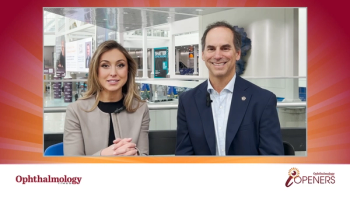
Cut yourself a ‘New Deal’ to gain back profits
Take control of your practice's finances using these three easy tips
In her latest blog, practice management specialist Donna A. Suter shares how you can allay financial fears and gain back profit using the three “R’s”: Relief, Recovery, and Reform.
Editor’s Note: Welcome to “
President Franklin Delano Roosevelt offered Americans the New Deal in March 1933, which was a series of economic programs aimed at combating the financial slump of the Great Depression. The stimulus package passed because Roosevelt was focused on the "3 R’s": Relief, Recovery, and Reform.
Back then, consumers were very uncertain of the economy and many expressed their fears when asked about the future. Flash forward 86 years, and not much has changed-many are still worried about their financial situations today.
However, you can make a ‘New Deal’ with yourself and use Roosevelt’s “3 R’s” as a template to alleviate financial woes and gain back profit for 2019.
- Relief
Everyone wants relief from managed care, and the first step in achieving this goal is identifying a profitable patient. This patient, statically speaking, comes with a good vision plan.
Wouldn’t it be a relief if the staff time necessary to keep up with all the demands placed on doctors and employees could be paired with acceptable profit? Ask your management team if it’s possible to collect and analyze 24 months of raw data to determine your profitable patient.
If your practice management software generates real-time performance data and profit-and-loss data, use it to track total receivables back to your most profitable revenue sources. Data, with proper analysis, can guide you into a future where tough decisions are clear. Demographic data is also available that tells you what that profitable patient looks like.
Here is anexample of how census data and practice can be compared and used:
Most of the U.S.’ professional- and managerial-level workers are women. Women bring in half or more household income. Women also make the majority of health-related decisions for, not only themselves, but for everyone in her household. How are you catering to this demographic? Try treating this demographic with respect, and give her the option to upgrade to customized, VIP care.
- Recovery
After he was sworn in, Roosevelt ordered all banks to close. He then asked Congress to pass legislation guaranteeing that citizens would not lose their money if there was another financial crisis.
What bold move are you willing to make to recover? Can you convince patients that you are concerned about their vision, and not just your profit margin?
Employees may look at a payor group on their digital device and discretely sigh or a shoot a subtle behind-the-back-eye-roll to a coworker. Both nonverbal gestures are noticed by intuitive patients.
This patient might interpret this type of body language as animosity. The result is that he or she will purchase “just what my vision plan covers” or leave and purchase eyewear online. He or she is also the surgical candidate who says they are going to seek a second opinion. Small cues matter, and even the smallest-positive or negative-patient interaction counts.
Implementing your New Deal
What are you willing to change to attract the profitable patient? Can you be quicker? Educate about options without being pushy? Not be a vision plan hater?
Decide among your practice’s doctors and management team who to invite to a five-person think tank. This group will then identify the practice’s internal strengths and weaknesses from the perspective of your most profitable patient demographic.
In order to do this, this team should be given access to historic financial graphs as well as asked to give input into a twelve-month budget. The budget will be used to implement the recommendations that your team ultimately suggests.
Which graphs? What financials? Surgical and patient visit graphs are a must. Graphs (A/R, gross charges, and net) showing extrapolations of increasing the practice’s market share of this population group will help you decide how much money you can afford to budget for internal and external marketing.
- Reform
The dictionary defines the verb tense of reform as to make better or to improve by removing faults or abuses. Reform cannot happen in a murky environment.
What’s the current “state of the practice”? Could you and all the key players agree on a brief positional statement? Do you all agree on strategic initiatives that might guide process improvement? What would you like to see improved in the next 12 months?
You now have your New Deal going. In this environment of reformation, take bold action that demonstrates to your most profitable patient that you want to become his or her practice of choice.
Change doesn’t happen overnight. Roosevelt’s New Deal was passed by Congress over a period of three years. His biography tells of personal growth, leadership changes and compromise. It was a tough time.
Do not kid yourself. Perseverance will be needed to maintain profitability. Taking actions that are guided by the tough decisions that your data tells you should have been made months ago will not be easy. Egos will be bruised, and heroes will emerge from areas that you though contained only villains.
If you are successful, the practice will undergo a metamorphosis. What will emerge is a realistic plan for the future. Think of how amazing you are. In 2019 you are able to preserve the vision of individuals who might have gone blind in the year 1933!
Disclosures:
Donna A. Suter
E: [email protected]
P: 423-545-4562
Ms. Suter is a business coach/trainer specializing in the eye care field. She frequently presents instructional courses at trade shows and conferences. Her topics range from trends in ophthalmic product technology to team building and marketing communications. She is best known for her emphasis on enhancing the patient’s perception of quality with an optical dispensary.
Newsletter
Don’t miss out—get Ophthalmology Times updates on the latest clinical advancements and expert interviews, straight to your inbox.













































